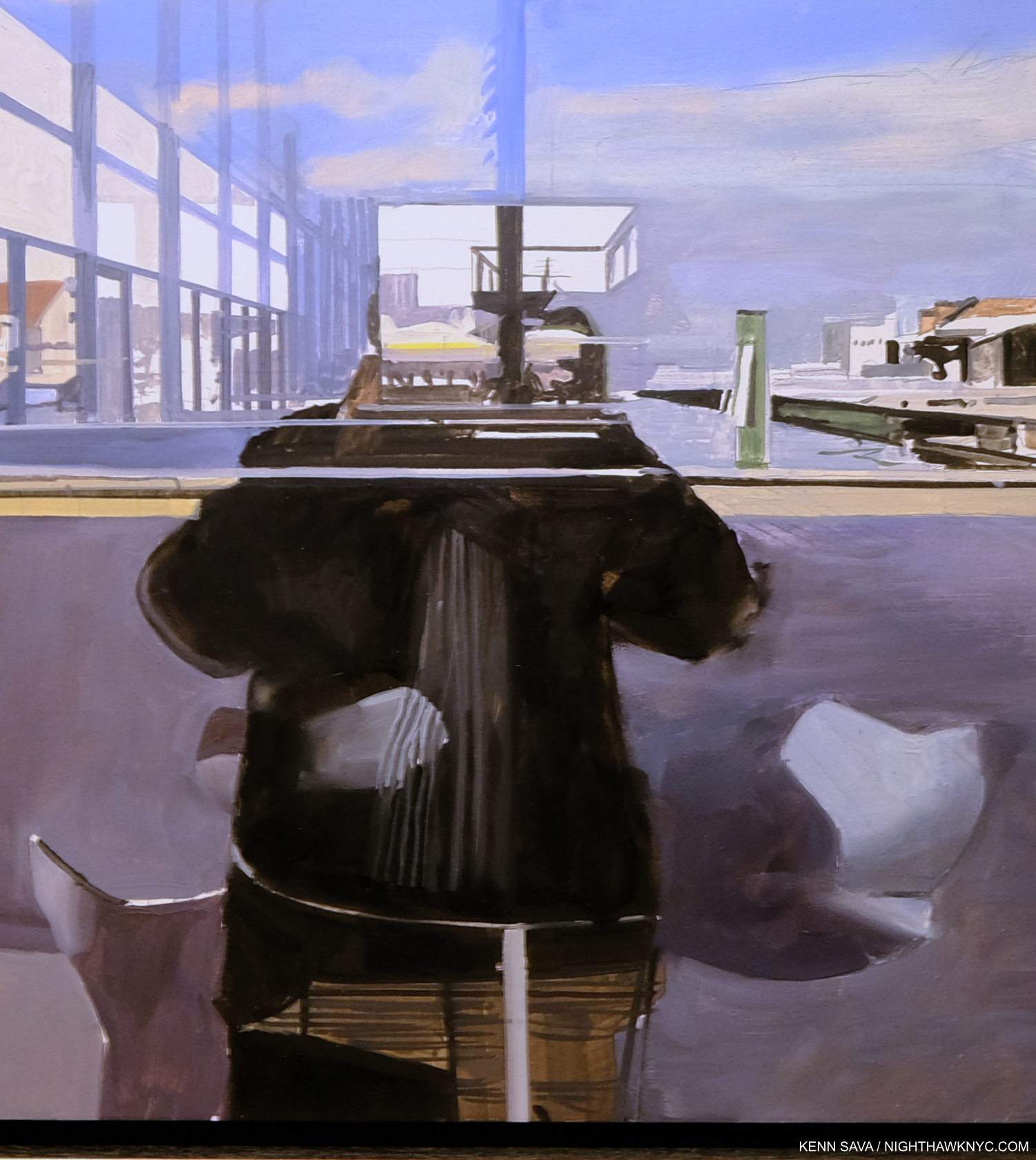This site is Free & Ad-Free! If you find this piece worthwhile, please donate via PayPal to support it & independent Art writing. You can also support it by buying Art & books! Details at the end. Thank you.
Written & Photographed by Kenn Sava (*unless otherwise credited)
This is Part 3, the final part, of my look at the work of Richard Estes on his 90th Birthday, May 23, 2022. Part 1. Part 2.
As I look through the work of Richard Estes, two Paintings stand apart for me. Both are “Self-Portraits.” Though those words are in their titles, I put it in quotes though because you can’t really see the Artist in either one, only his shadow or ghost, and so they’re not typical Self-Portraits. Yet, that’s what the Artist has titled each. First, some context-
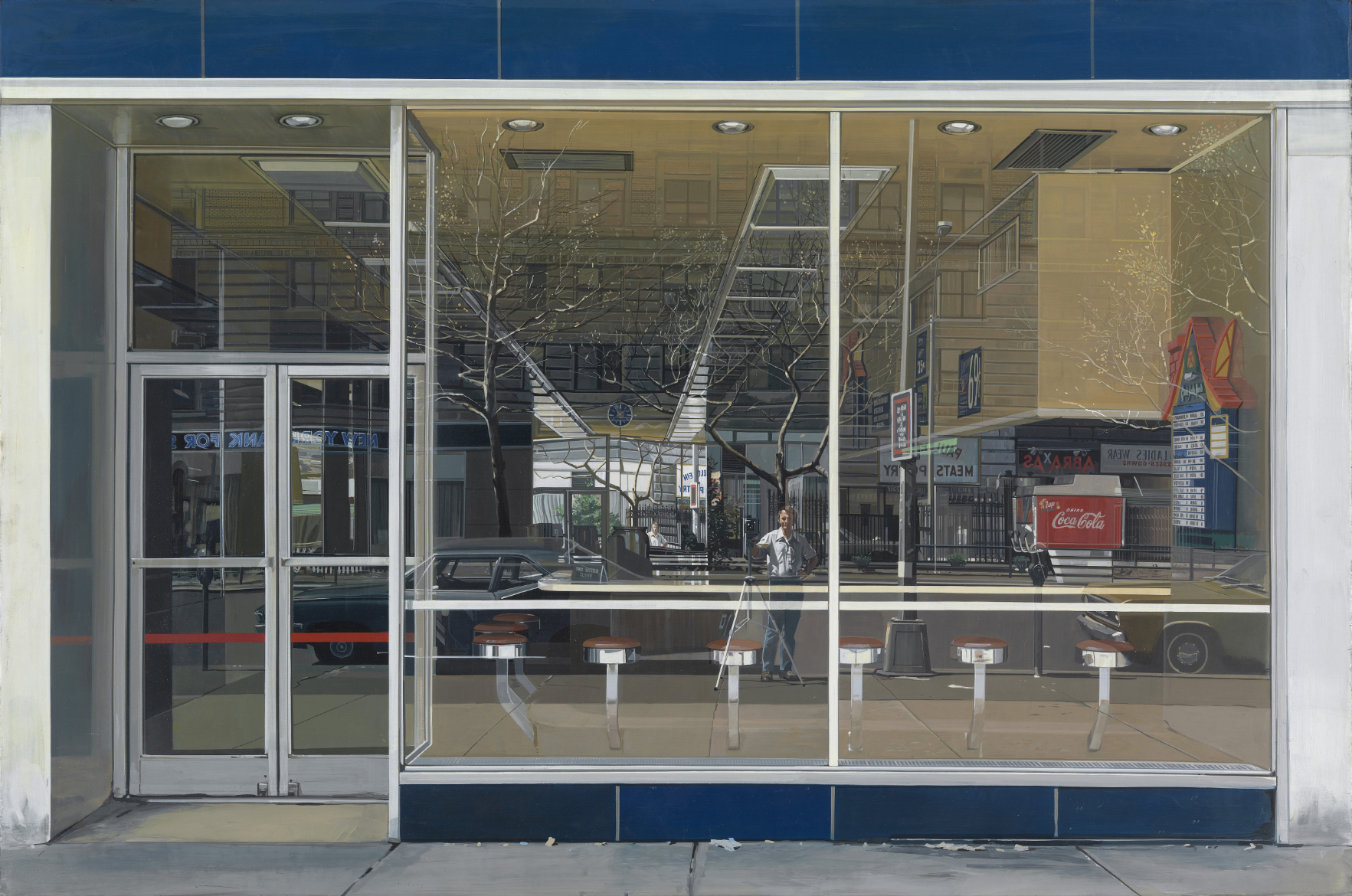
This ISN’T one of them. Double Self-Portrait, 1967, Oil on canvas, 24 x 36 inches. When I think of how Richard Estes taught me how to see, this is a prime example of it. *Smithsonian Photo
Richard Estes has been given us a few Self-Portraits and de facto Self-Portraits dating back to 1967’s Double Self-Portrait, which is now in MoMA. In other Paintings, we see his shadow on the landscape, though these are not titled “Self-Portraits.” In 2015, at the Museum of Art & Designs, Richard Estes: Painting New York City show, which I wrote about here, I was taken by a Self-Portrait, dated 2013, one of the most recent Paintings in the show, hung near the end of it. I can’t say I’d seen anything like it in Richard Estes’s oeuvre to that point.
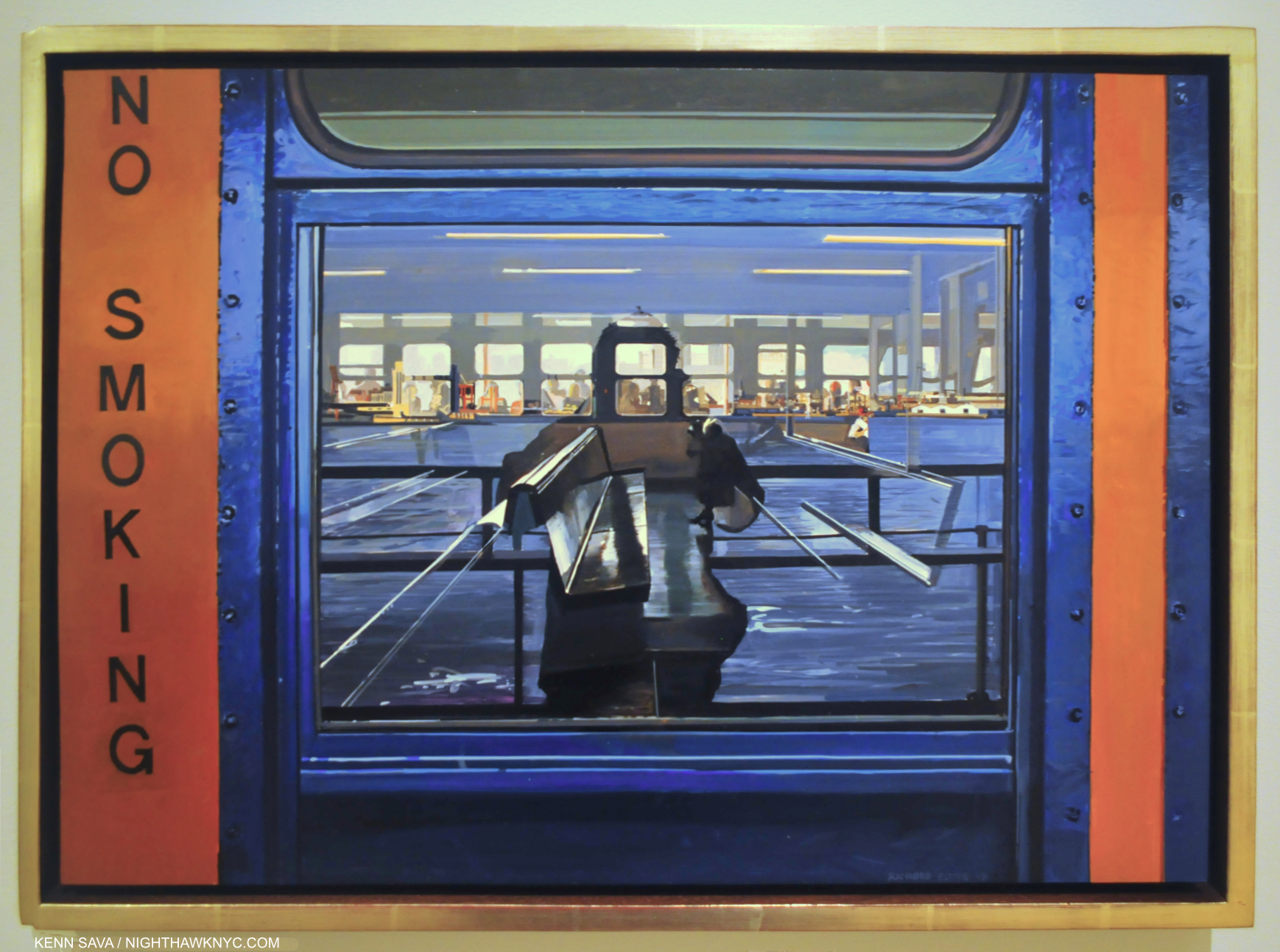
Self-Portrait, 2013, Oil.on board, 15 x 13 inches. The Artist “seen” on the Staten Island Ferry. Another work that further effected how I see the world. Seen in Richard Estes: Painting New York City at the Museum of Art & Design in 2015.
I put a picture of it up and I’ve looked at it often these past 7 years since I first saw it. In it, the body of the ferry is rendered in crystal clear and vibrantly colored detail. You can clearly see the texture of the paint on the ship, a Painting of paint by the Artist! The eye makes out the shape of a torso and we are to assume that this is the titular “Self-Portrait.” Apparently, the Artist is holding a camera, though the center of Mr. Estes’s head and upper chest, where the camera would be, is missing or hidden by reflections.
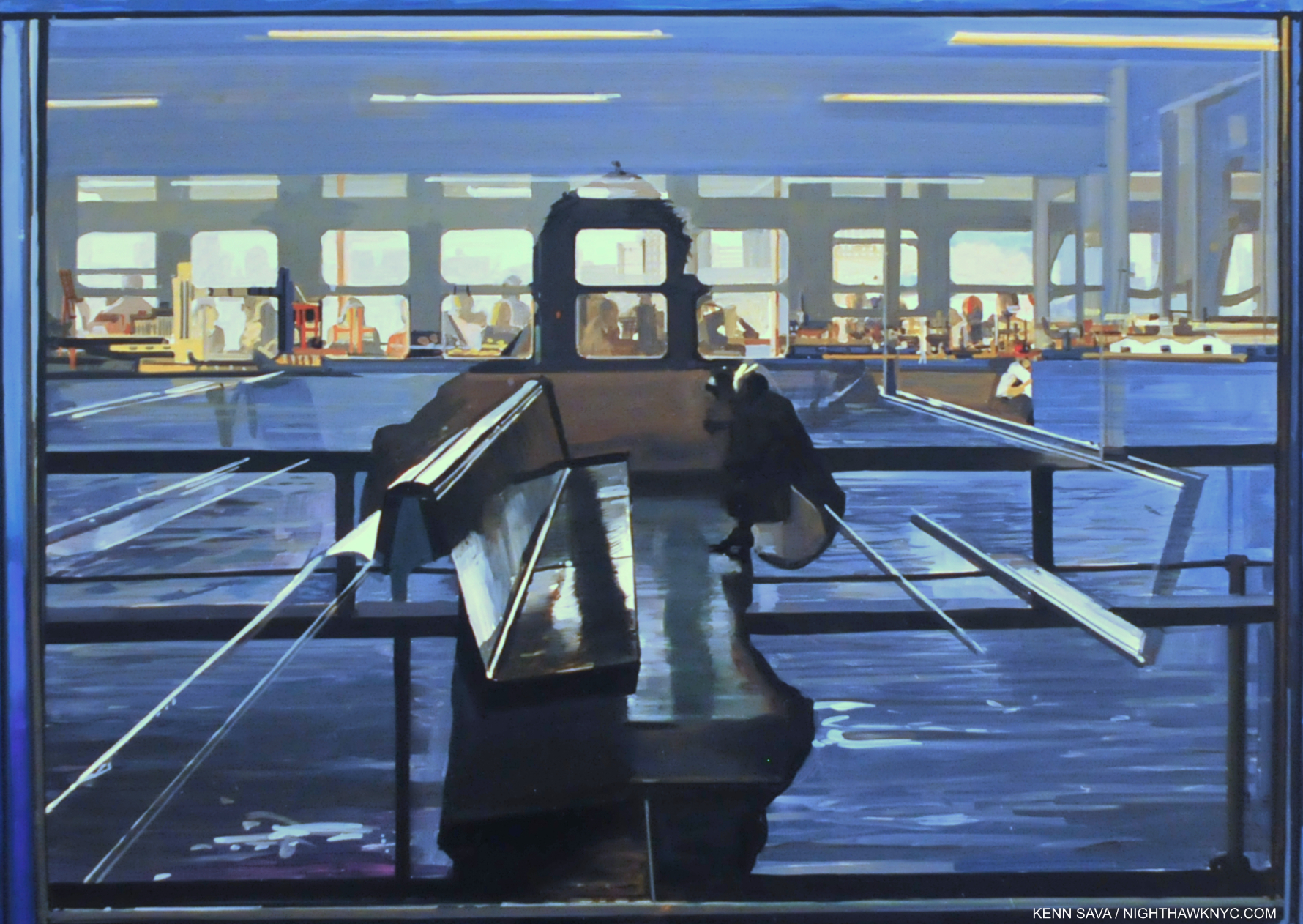
Detail of the “Painting inside the Painting.” The “abstract” Richard Estes in full effect- in the real world!
The window acts as a sort of frame for the main part of the composition. Inside that “frame” things are completely different. Nothing is in sharp detail, though everything is sublimely Painted. Silvery lines lead the eye further and further back to the NYC skyline lining what may be the “background,” though it’s hard to tell. It, too, is out of focus and indistinguishable to the point that I can’t identify any of the buildings. Richard Estes: Abstractionist? His work DOESN’T need another box!
What to make of this?
My personal view is that this may be something of a “manifesto.” In it, Mr. Estes shows that he is perfectly capable of Painting wonderfully in multiple styles, and he, represented by the mysterious partial shadow, won’t be “defined” by one, i.e. a sharply detailed Portrait, like we see in Double Self-Portrait up top. HOW can this be called so-called photorealism when you can’t even clearly see the “Self-Portrait” in a work titled just that? Yes, he can paint crystal clearly- when it suits him and his purpose, but he’s perfectly able, and apt, to Paint however he needs to to achieve his purpose.
Thinking about this further, Painting up until the beginning of the 20th century was strictly “representational.” Around the turn of the century, Artist like Hilma af Klint, Kandinsky, Monet and others, began exploring abstraction. Abstraction became the 2nd great type of Art in Art history. In Self-Portrait, 2013, I see both, side by side, as they appear in the real world.
In summing up the Art of Richard Estes, in my opinion, Richard Estes’s represents nothing less than a kind of culmination of the history of Painting in a way. He is among the first to combine representational and abstraction in his Art, even if he has done it unintentionally. This is what I see it when I look at his Art. In my view, THIS is something that should be receiving a lot more attention than it has gotten (i.e. almost none). It hasn’t because people are too busy being limited by what his work is “supposed” to be, as decreed by the box makers. They think that is all his Art is, as I said in Part 1! That’s because they’ve stopped looking at it. To wit-
In July, 2021, at Richard Estes: Voyages, I was stopped by another recent Self-Portrait, this one strategically installed half way through the show.
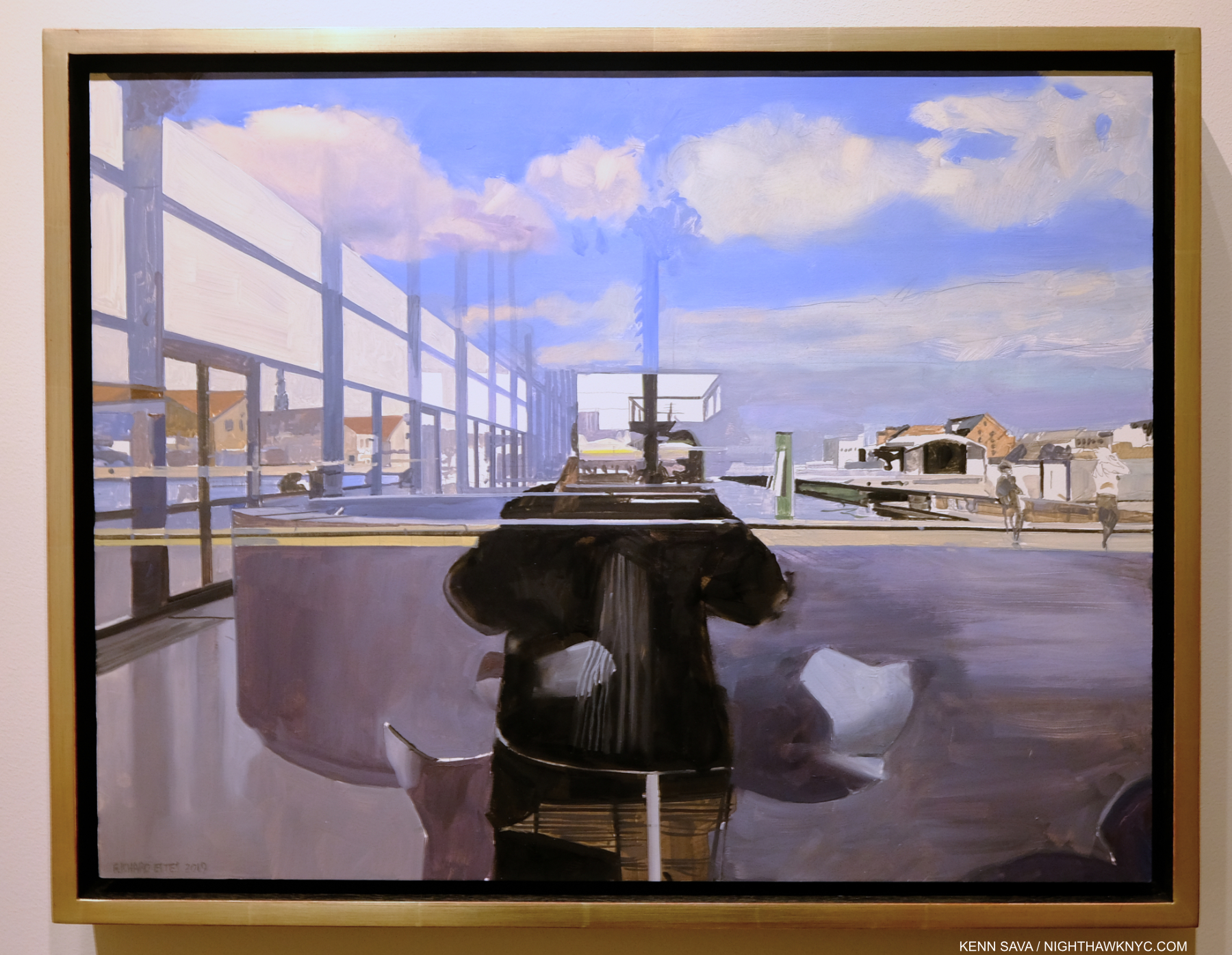
Self-Portrait in Copenhagen, 2019, Oil on panel, 16 x 20 inches. The Artist seen 52 years after Double Self-Portrait!
Again, this piece has been on my mind from the moment I first saw it. It shares some elements with the Ferry Self-Portrait, like the row of lines leading the eye further and further in, and the central titular dark shape with the “head” missing. This time, the “frame” of the outside world, that served to “ground” the Ferry Self-Portrait, to prepare the viewer (in a way) for the abstraction, has been removed. That means NOTHING in this piece is sharply rendered! EVERYTHING in it is nebulous. In that regard, it strikes as an “evolution” from the 2013 Ferry Self-Portrait- now, the whole Painting is that “Painting in a Painting” I showed earlier inside the Ferry Self-Portait(!). It is, perhaps, its logical culmination.
NOTHING in focus is downright shocking to see in a finished Painting by Richard Estes (which I assume it is since it was in his shows in NYC, London and Florida). To top it off, parts of it appear to be unfinished! Obviously, given its exhibition history, this is intentional. As a result, it’s hard for me to not see it as an extension of the “manifesto” of the 2013 Ferry Self-Portrait. Mr. Estes is showing us he will Paint as he pleases- without the expectations of anyone.
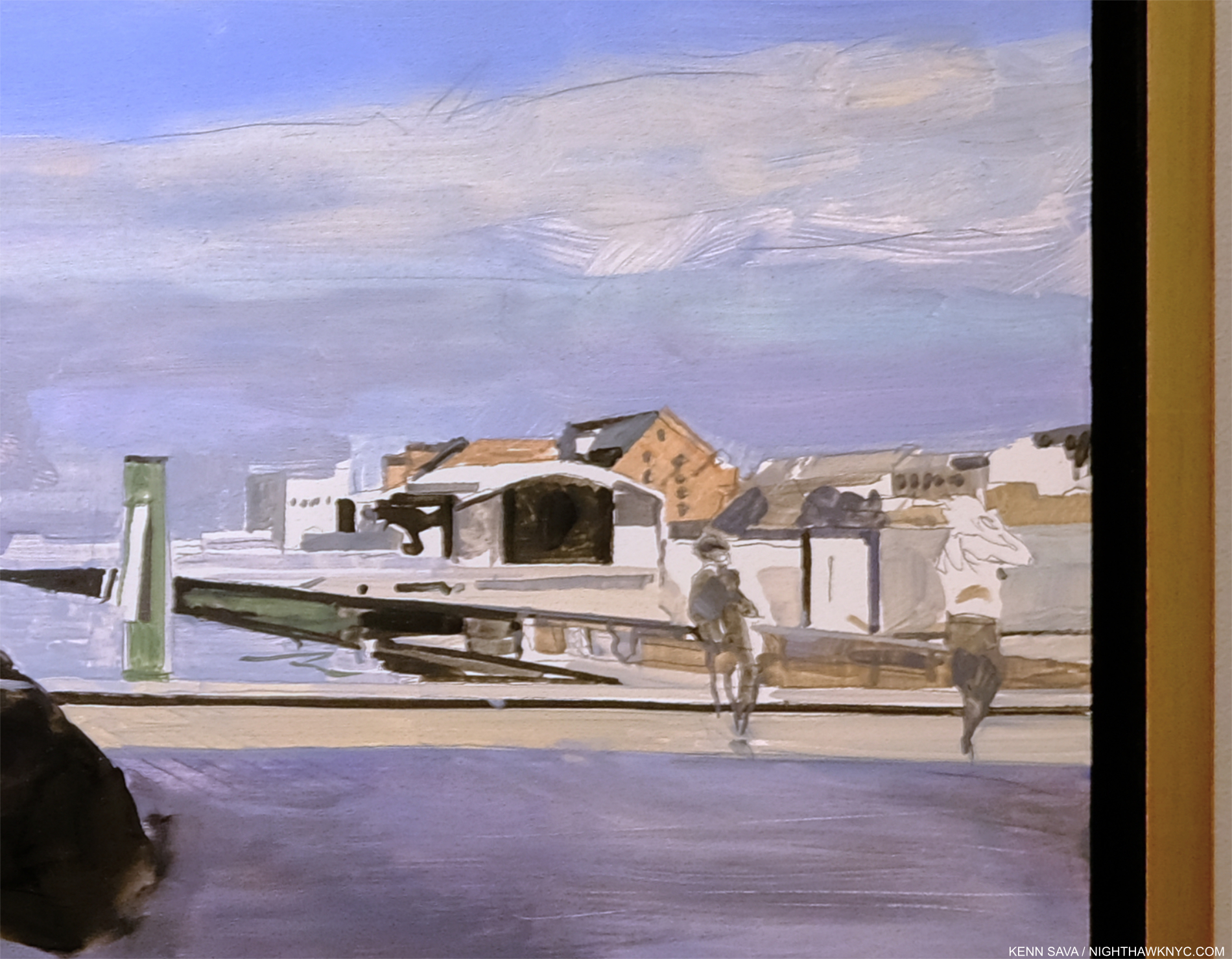
Detail of the right section. Note the figure exiting to the right. This section looks to me more like something by Neo Rauch than Richard Estes.
Look! That figure on the far right is only half Painted! His or her torso is only outlined! There is nothing like this in Richard Estes’s oeuvre since 1967!
A Self-Portrait is a Portrait created by an Artist of his or herself. If I read these last two Self-Portraits literally, they are how the Artist sees himself, and in my view, how he sees his Painting. In the 2013 Ferry Self-Portrait, he shows us his mastery of multiple styles and uses them to present representation and abstraction in the same piece (as I see it). In his 2019 Self-Portrait in Copenhagen we see the Artist completely comfortable in showing us only a “looser,” FREER (a keyword about this piece for me), uninhibited, and perhaps MORE PAINTERLY style than we have seen in an entire Painting since 1967.
This says to me “THIS is how I see myself, and my Painting.”
Many more, Mr. Estes!
*-Soundtrack for this Post is a wonderful, surprise, blending of Beethoven’s Eroica with Happy Birthday for Sir Roger Norrington on his 84th as performed by the SWR Symphonieorchester borrowed for the 90th of this fan of Classical Music-
NighthawkNYC.com has been entirely self-funded & ad-free for over 8 1/2 years, during which 320 full-length pieces have been published! If you’ve found it worthwhile, PLEASE donate by PayPal to allow me to continue below. Thank you, Kenn.
You can also support it by buying Art, Art & Photography books, and Music from my collection! Art & Books may be found here. Music here and here.
Written & photographed by Kenn Sava for nighthawknyc.com unless otherwise credited. To send comments, thoughts, feedback or propositions click here. Click the white box on the upper right for the archives or to search them. Subscribe to be notified of new Posts below. Your information will be used for no other purpose.

